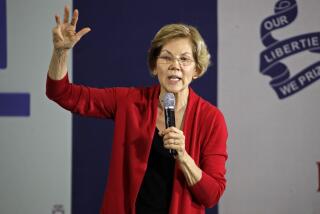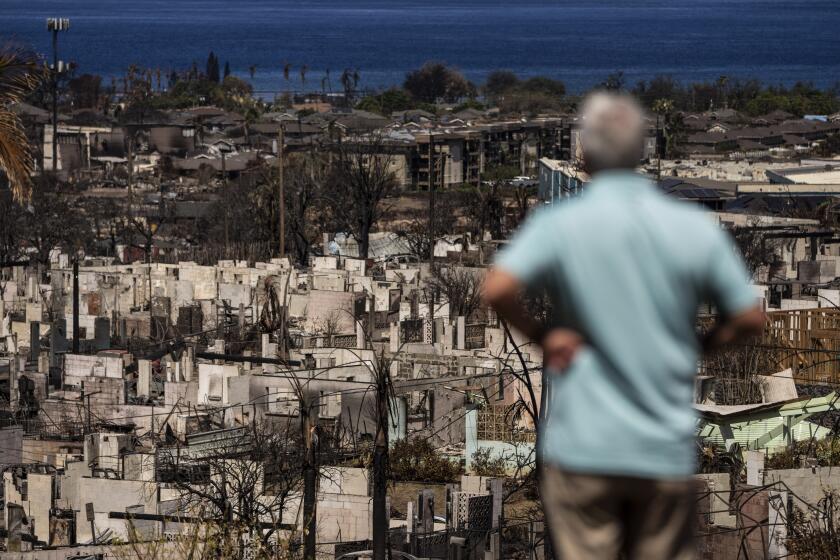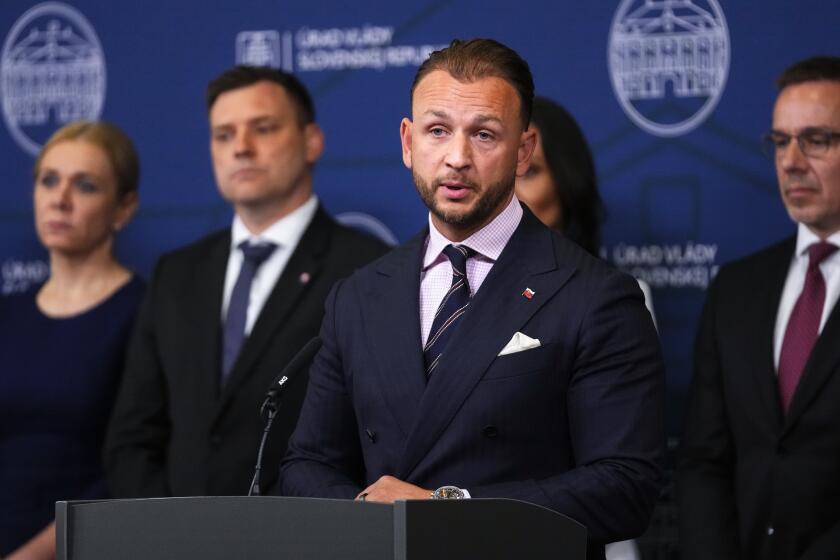Conservative Ahead in Bolivia Vote : Ex-General Calling for ‘Shock Treatment’ to Cut Inflation
A strong protest vote against Bolivia’s left-wing government gave a strong early lead in presidential elections Sunday to Hugo Banzer, leader of a conservative democratic party.
Banzer, candidate of the National Democratic Action party, was winning more than 40% of the presidential vote in unofficial returns.
In this capital, with 415,000 registered voters, Banzer was winning more than 50% of the vote, based on results from 20% of the polls. He was also winning in Cochabamba and Santa Cruz, the two largest voting districts outside of the department of La Paz.
Far behind in second place was Victor Paz Estenssoro, a former president and candidate of the centrist Nationalist Revolutionary Movement, with about 20% of the vote.
With President Hernan Siles Zuazo ineligible for reelection, the candidate of the ruling coalition, Roberto Jordan Bando, was receiving less than 5% of the vote.
Banzer, 58, a retired army general, was a military dictator here from 1971 to 1978, but he now leads a party that offers a conservative economic program and a commitment to constitutional rule.
“I think we have won a majority of the seats in the next Congress, and this assures the election of Banzer as president,” said Eudoro Galindo, Banzer’s vice presidential running mate. The party postponed a victory celebration, however, until full returns are in.
If no presidental candidate wins 50% of the popular vote, the Congress that was elected Sunday will choose the next president among the three candidates receiving the most votes. This means that the winner will probably not be known until the new Congress opens Aug. 4. The new president is to take office Aug. 6.
When the polls closed at sundown, ballot boxes were opened and the vote count began in the presence of party representatives. Official results will be announced by the National Electoral Court after a review of the initial tally.
There were 18 presidential choices on the multicolored ballots, all carrying the photos and symbols of each candidate, but for the voters there was one dominant issue: the national economic crisis.
Banzer has promised “shock treatment” to brake the world’s highest rate of inflation--a staggering 10,000% over the last 12 months.
The strength of the opposition candidates, and the weakness of Jordan, the ruling coalition’s choice, can be attributed to a strong protest vote against runaway prices, loss of purchasing power by the working class and rising unemployment under President Siles.
“I have voted because I hope this election will produce a government that will bring a change for the better after all that we have suffered in the recent past,” said Heriberto Vasquez, a factory worker.
Siles, 70, took office as a democratically elected president in 1982, two years after a right-wing military group annuled the election he had won in 1980 and shut down Congress.
After a national strike by unions and merchants, a countercoup by military officers favoring constitutional rule brought Siles back from exile and installed him and the Congress in power, with broad public support.
However, his leftist coalition, including the Moscow-line Communist Party, never won the backing of union leaders for an austerity program to halt inflation. Siles defaulted on Bolivia’s foreign debt to private banks. The federal treasury is now bankrupt, and the government pays its bills with newly printed paper money.
On Sunday, the Andean country’s 2.1 million registered voters turned out in large numbers, marking and depositing ballots at 8,072 polling places. They were electing senators, deputies and local officials, as well as a new president.
There were sunny skies all over this landlocked country deep in the South American heartland--from the 13,000-foot highlands here in the capital, across the mountain mining towns, down the fertile valley of Cochabamba, and into the tropical lowlands of Santa Cruz.
Voting was orderly, despite delays from frequent disorganization in the distribution of ballots.
This was the fourth time in seven years that Bolivians have voted for president. The military threw out elections in 1978 that ended seven years of strongman rule by Banzer, because of fraud that led to suspension of the vote count by the Electoral Court.
A new try was made in 1979, but the military again intervened when Congress became deadlocked over choosing the presidential winner in a runoff. A third election in 1980 led to another round of military intervention after Siles was the apparent winner.
More to Read
Start your day right
Sign up for Essential California for news, features and recommendations from the L.A. Times and beyond in your inbox six days a week.
You may occasionally receive promotional content from the Los Angeles Times.






